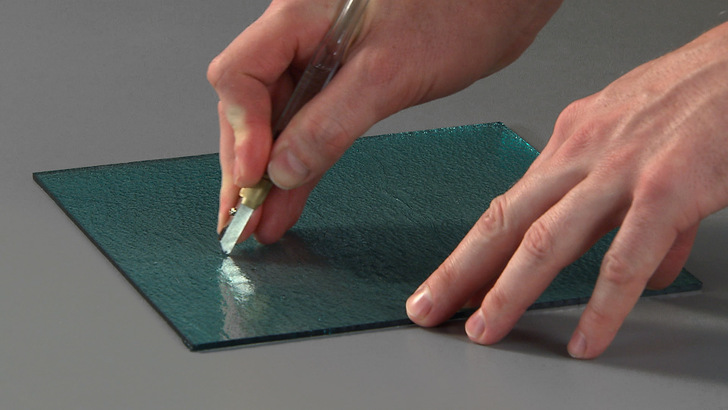The quality of the cut can be influenced by the use of cutting fluids (e.g. petroleum), which make it more difficult for the crack to splinter unintentionally. Curved cuts are possible to a certain extent, but are problematic when breaking the glass pane, as the course of the break often deviates unintentionally from the specified crack.
Depending on the quality of the incipient crack, irregular and wavy cut edges with micro-cracks, run-ins and break-outs can occur during breaking, which influence the quality of the edge and make reworking by grinding necessary. Such damage significantly reduces the strength of the glass in the area of the edge.
Are there other glass cutting methods?
Another method of cutting is the water jet process. A nozzle of 0.1 mm to 0.6 mm shapes the water at a pressure of up to 4000 bar into a fine jet that reaches a speed of up to 1,000 m/s. To cut glass, water is added to the water jet at a pressure of up to 4000 bar. To cut glass, additional abrasives are added to the water jet to improve the quality of the cut. With the support of the computer, almost any shape of cut is possible with this process.
A newer process of glass cutting is laser cutting. With computer control, a defined energy input is made into the glass, which leads to an almost invisible crack in the material. The crack is formed exactly in the desired cutting direction. With such precision cuts, run-ins and break-outs can be almost completely avoided. Since the cut edges have an excellent surface quality, they no longer have to be extensively reworked. The technique is mainly used for special types of glass.













